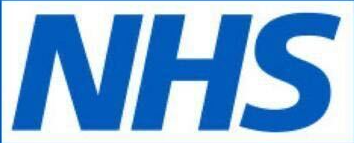Did you know you can test at home? With NHS coronavirus testing kits, it’s possible to do the test at home and get the results within half an hour for the rapid test. Let’s learn a bit more about the home COVID-19 test and how to use it.
Two Types of Tests: Which Should You Use?
There are two main types of coronavirus tests that are used in the UK. These may be administered by a health worker or you may use the home test kit.
PCR: This test is recommended for anyone who is experiencing symptoms, including:
– Loss of taste or smell
– High temperature
– Persistent cough
The test takes longer to do and is considered more accurate. You can do this test and then send it in to a lab, which will test your sample and give you the results.
Rapid lateral flow test: This type of test is similar to a pregnancy test in the way it works, but it provides faster results than the PCR test. You should consider taking this test if you don’t have symptoms but feel you may have been exposed. It can be taken twice a week to ensure you’re not infected.
How to Use the PCR Home Test
You can pick up your test at a test site or you can have it sent to your home. Either option works well.
Step 1: Clean your hands thoroughly.
Step 2: Open the test and set out all the items on a clean surface.
Step 3: Blow your nose and wash your hands.
Step 4: Use the swab to carefully rub where your tonsils are or would be. You should not touch the swab to your tongue, teeth, or gums.
Step 5: Using the same swab, insert it in your nose about 2.5 cm and swirl it lightly around the nostril.
Step 6: Drop the swab side of the stick down in the tube and close it tightly.
Step 7: Place the tube in the provided bag.
Step 8: Return the test to the test site worker or post it in a Royal Mail priority post-box. It cannot be sent via a non-priority post-box or the Post Office.
Step 9: Wait for your results.
How to Use the Rapid Lateral Flow Home Test
The most common type of home COVID-19 test is the rapid lateral flow home test. It doesn’t require sending the sample to a lab and the results are available in 15-30 minutes, depending on the test.
There are two versions of these tests. One requires a throat and nose swab and the other is only for a nose swab. Be sure to check the instructions to determine which type of test you have.
Step 1: Wash your hands thoroughly.
Step 2: Take everything out of the kit and place it on a clean surface.
Step 3: Put the tube in the tube holder. If it’s not pre-filled, fill it with the provided liquid and close the lid.
Step 4: Blow your nose and wash your hands.
Step 5: If you have a nasal only test, skip to the next step. Use the swab to rub your tonsils or where they should be. Do not touch the swab to your gums, teeth, or tongue.
Step 6: Use the same swab and insert it into your nose about 2.5 cm and swirl it around.
Step 7: Put the swab end of the stick into the tube and let it soak up the liquid.
Step 8: Squeeze out the test tube liquid onto the test strip.
Step 9: Wait the amount of time listed in the instructions and check the test. You should see one or two lines.
- A negative result will show a single coloured line beside the C and there will be no line beside the T.
- A positive result will show two coloured lines, one beside the C and one beside the T. Even if the T line is very light, this is still a positive result.
- If you see no lines or only a line where the T is and no C line, the result is void and cannot be used.
Step 10: Record your test results online with the QR code or the ID number.
You can take this test more frequently since it is a rapid test. It’s recommended that you take it every three or four days to ensure you catch any infection early on.
When Should You Take a Home Test?
You can take a home test whenever you suspect you may have been exposed to coronavirus. It’s worth the peace of mind to take a rapid test. You should also take a test if:
- You have symptoms. This is especially important if you have lost your sense of taste or smell, noticed changes with your senses, have a high temperature, or have developed a persistent cough.
- You know you’ve been exposed to someone positive. When someone you have been in contact with tests positive, you will need to get tested, as well. You may need to test more than once and should also take precautions not to infect others while you are waiting for results.
- It’s required for work. Some workplaces require regular testing to ensure their employees and customers are as safe as possible. You’ll also need to take other precautions to prevent infection. Wearing a mask and frequent handwashing, combined with social distancing will help keep everyone safe in the workplace.
- You plan to attend an event. Any type of event is likely to require a negative test, including holiday parties, concerts, and other such occasions. Any time you will be in close proximity with a group of people, you may need proof of a negative test. You may wish to test a few times in the weeks following the event.
- You will be travelling. Travel is not recommended for most of the world, but if you do travel, you’ll likely need proof that you are not Covid-19 positive. This means taking a test before you leave. You’ll likely need to take one upon your return, as well.
If you are told to present a negative test result for any occasion, you should take a test. You may also wish to test yourself twice a week to ensure you know if you are positive very quickly. Anyone in a high-risk occupation will want to do this.
What to Do If You Test Positive
It can be scary to see a positive test result, but if you do get a positive, don’t panic. First, you’ll need to stay away from other people and self-isolate. This means you should not have contact with anyone outside the home and it’s best to stay away from those in the home, as well, until they have been tested.
You’ll need to self-isolate for up to two weeks, or until you test negative, but your doctor can advise you on this. Speaking to a doctor is the next step in staying safe. Once you’ve received a positive result, you should contact your doctor and get their Covid-19 advice. It’s essential that you follow your doctor’s advice and report any symptoms you may develop. If you’re prescribed medicine, then you should make sure you take it as ordered.
Where to Find More Covid-19 Advice
If you need to know more about coronavirus and NHS coronavirus testing, NHS online offers plenty of information to keep you up to date. You’ll also find clinical services offered online so you can consult with a doctor and get personalised attention.
The doctor will evaluate your results and ensure you have the necessary treatment. They will also advise you if you need to visit the hospital for more intensive care. To schedule NHS online clinical services, you can visit our page.





Leave a Reply